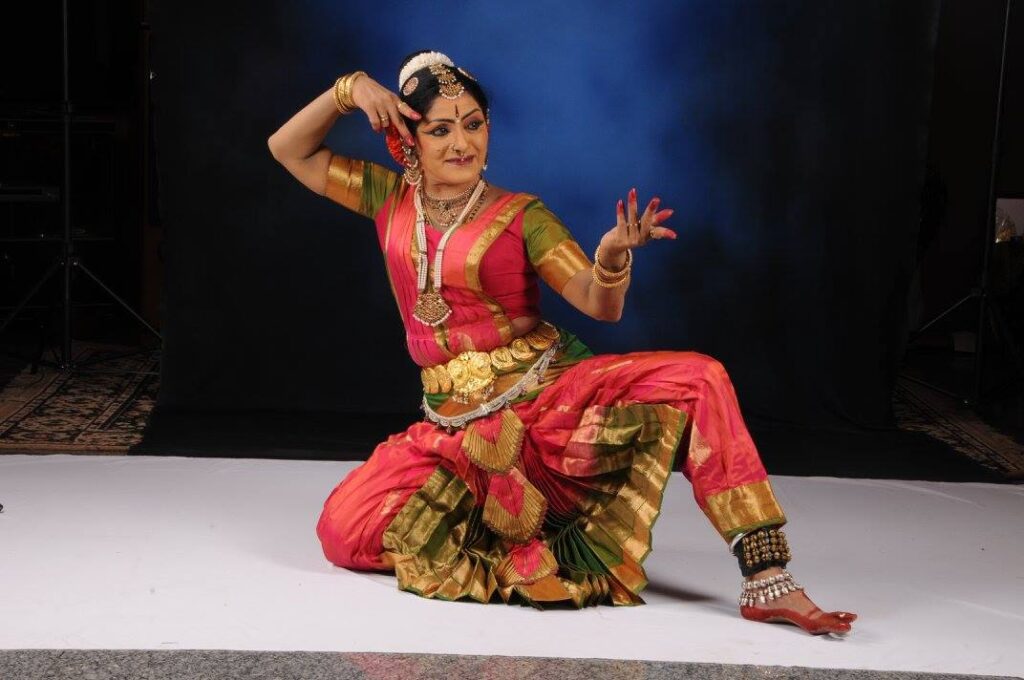Practising and gaining proficiency over Vrikshasana leads to the stability of both the mind and body.
Achieving stability in postures is one of the prerequisites of a good nritha. It is an important factor in abhinaya too. When the body is stable, the mind also gets automatically into a state of tranquility. Practising and gaining proficiency over Vrikshasana leads to the stability of both the mind and body.
How to do it?
Stand in the Thadasana posture. Holding the ankle of one of the legs straight, flex the knee (folding) and draw the heel towards the perineum and see that it is firmly pressed in that position.
Learn this with both legs in alternation. Later on, raise the hands above the head and stretch them and join the palms.
Breathing:
The same as explained for Thadasana.
Mental state:
The same as for Thadasana
Of the six types of resting postures (vishrantha sthanaka), ekapada employed in potraying thapas and stability of mind, aindra (portraying Indra and emperors) and Siva (while portraying Nataraja postures require balancing on one leg. Unless the performer has achieved stability, he cannot stay in these postures for a considerable time. Assuming these postures for a very short time will not give him any advantage in rendering his performance aesthetically. A few utplavanas also need this posture.It is of utmost importance for a beginner to achieve stability. The stability he/she achieves in this posture helps greatly in describing bhramaris (revolving on one leg). The asana plays a very vital role in all stages of practice starting from the adavus (for example, nattadavu), swarajathis and advanced practices like karanas such as alathaka karana, urdhvajaanu karana, dandapaksha karana.
Write to us at editor@indiaartreview.com

